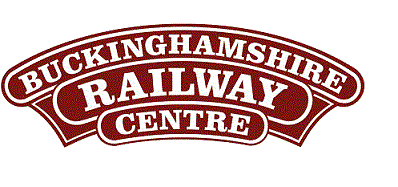
BRC Website Home
Quainton Virtual Stockbook
Quainton News Archive -
Quainton News No. 13 - September 1972
Harlington Signal Box
Quainton Road Signalbox Diagram - by T J Stevens

BRC Website Home
Quainton Virtual Stockbook
Quainton News Archive -
Quainton News No. 13 - September 1972
Harlington Signal Box
Quainton Road Signalbox Diagram - by T J Stevens
|
After seeing the signalbox diagram of Quainton in the last News a number of people have asked if I can explain the conventions used in drawing such a diagram which was a feature of every mechanical box. Points and signals were depicted on the diagram in positions corresponding to the levers being "normal" in the frame. Sidings and yards not controlled from the box were not normally shown. All the points and signals were numbered, so that, with a glance at the diagram, the signalman could quickly locate a particular lever. On the Quainton diagram, numbering commenced with the up line running signals, Verney Branch Home (13), Up Main Distant (14) and Up Main Home (15), and continued with the remainder of the Up line signals. Then came points and subsidiary signals, and finally the Down line running signals, finishing with the Down Distant (48). Thus most of the levers for a particular movement were grouped together. A signalbox diagram also shows track circuits. On the original Quainton diagram these are shown in red, with the track circuit number alongside. The breaks in the track circuiting are shown by the large letters A to K. Signals 16, 17, 18, 46 and 47 have a lozenged-shaped plate halfway up the post. This indicates to a driver stopped at one of the signals that the section of line is track circuited, and the presence of the train is visible on an indicator in the signal box. This exempts the train crew from carrying out Rule 55. Signals 13, 15, 43 and 44 have a similar plate, indicating that there is a telephone or call plunger to the signal box. Surrounding the diagram are several tables, showing spare levers, signals and points electrically Worked and indicated, and track circuit controls on signals and block instruments. In many larger boxes, lamps were incorporated into the diagram to show track circuit indications, but in Quainton box the track circuits were shown on separate indicators. The diagram reproduced in the June News shows the layout at its fullest extent in 1936. A later diagram of 1939 shows the Verney line reduced to single track, with the junction points secured out of use. In 1939, only 34 of the 55 leavers were in use. In the News the caption to the photograph of Quainton Road SB says 'Signal 06 is cleared. This should have read 46. |
|
Notes: Reference: |
Text © Quainton Railway Society / Photographs © Quainton Railway Society or referenced photographer
Email Webmaster
Page Updated: 20 October 2017